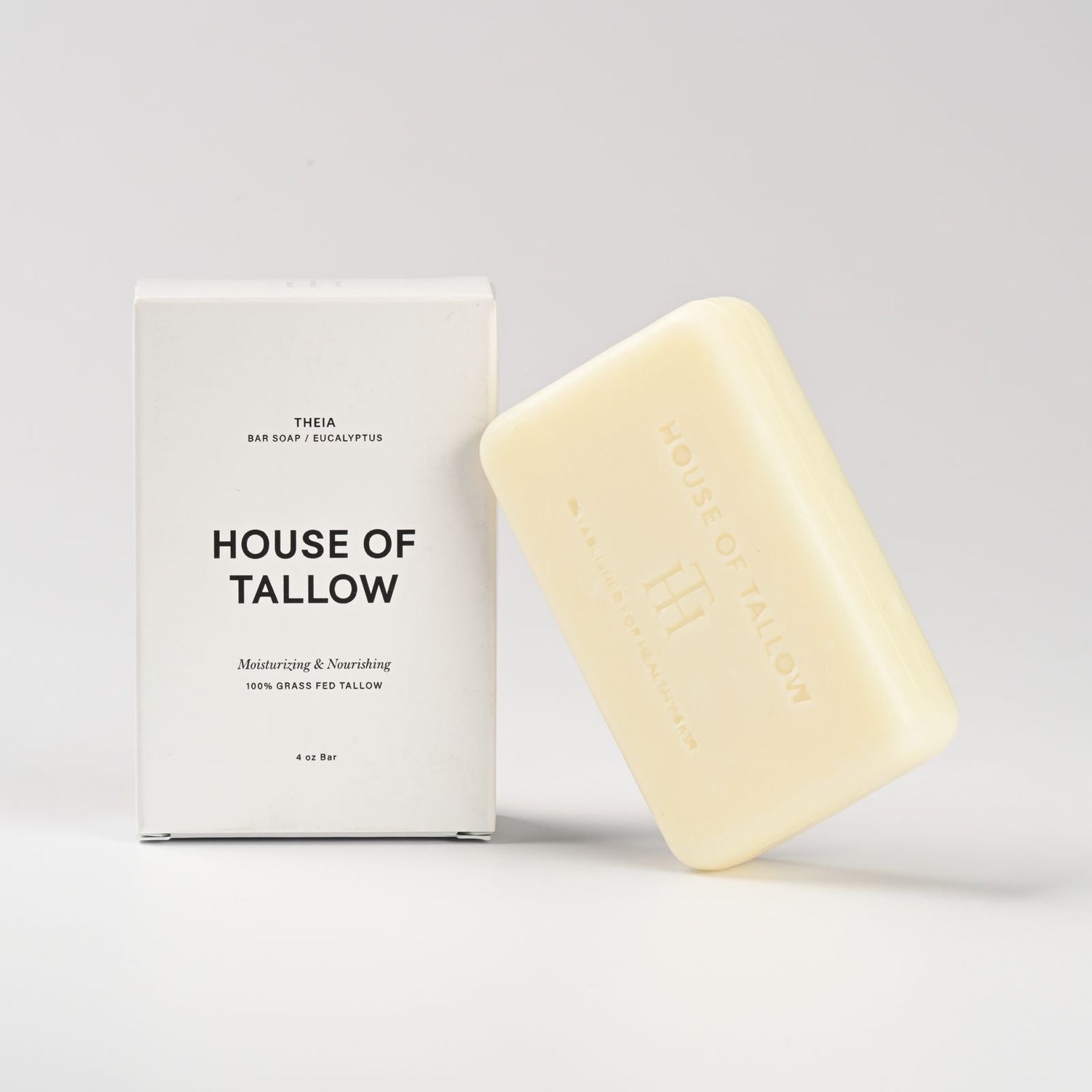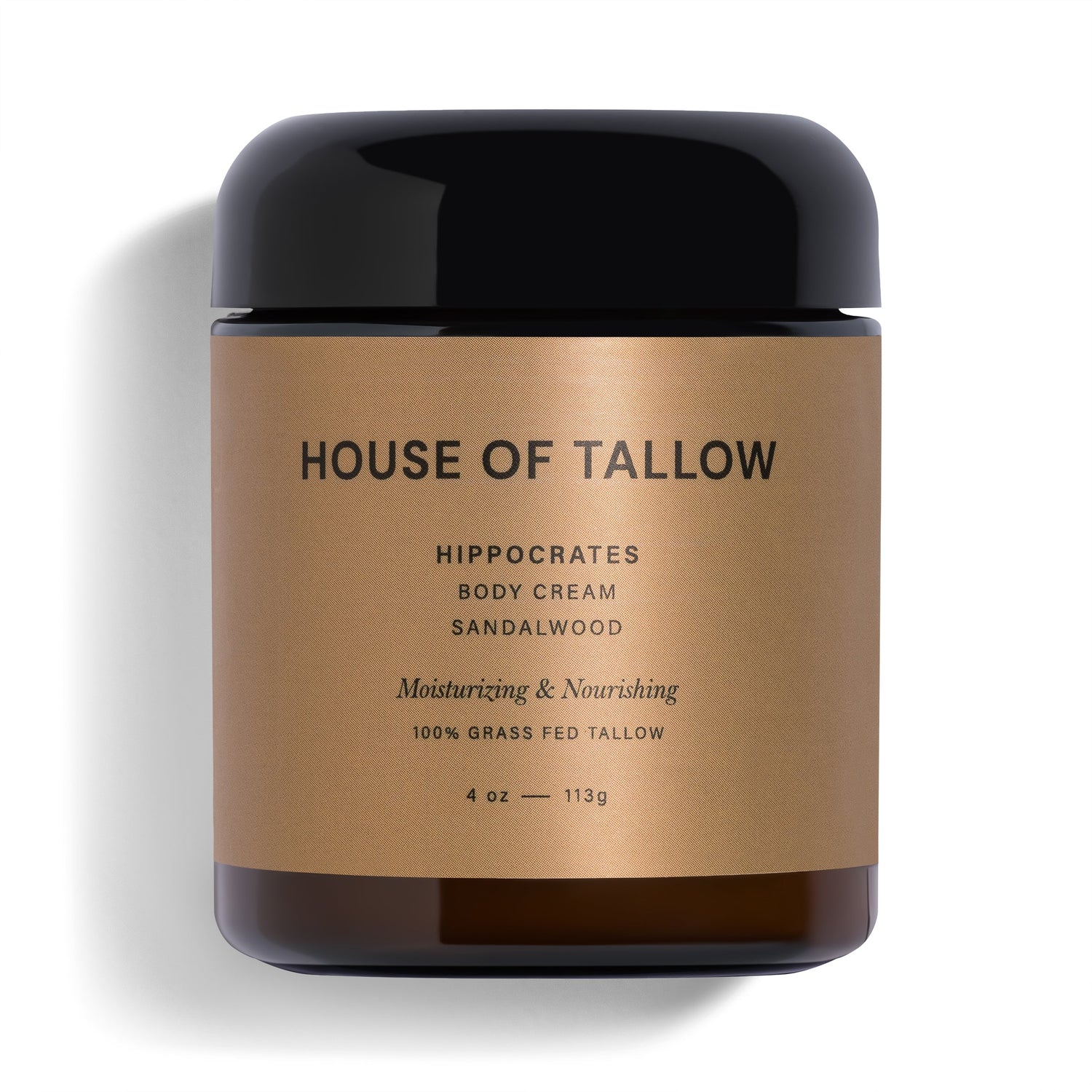Tallow is a natural skincare ingredient gaining popularity for its ability to hydrate and repair sensitive skin. However, it’s not without risks. Here's what you need to know:
-
Potential Risks:
- Pore Clogging: Overuse can block pores, especially for acne-prone skin.
- Allergic Reactions: Symptoms like redness, itching, or rashes may occur in some users.
- Storage Issues: Improper storage can lead to contamination or spoilage.
-
Safety Tips:
- Always patch test before full application.
- Store tallow in a cool, dark place and use clean applicators.
- Start with unscented, pure tallow products to reduce irritation risks.
- Alternatives: If tallow doesn’t work for your skin, consider gentler options like shea butter, jojoba oil, or squalane for hydration without the risks.
Sensitive skin requires caution, so monitor your skin’s reaction and consult a dermatologist if issues persist.
Is Beef Tallow Good for Your Skin? Dermatologist Analysis
Risks When Using Tallow on Sensitive Skin
Tallow contains fatty acids and vitamins that can benefit the skin, but sensitive skin might not always react well. Here are the main concerns to keep in mind:
Pore Clogging Issues
Tallow’s thicker texture can sometimes block pores if over-applied, especially for those with sensitive or acne-prone skin. Products like those from House of Tallow (https://houseoftallow.com) are carefully processed to reduce this risk, but it’s still important to use them carefully.
- Apply a thin, even layer.
- Opt for formulations made specifically for the face.
- Cleanse your skin thoroughly before and after use.
- Monitor how your skin responds over time.
Common Allergic Reactions
While tallow is usually gentle, some people with sensitive skin may experience reactions to its components or trace elements. Here’s what to watch for:
| Reaction Type | Symptoms | When It Happens |
|---|---|---|
| Immediate | Redness, itching, burning | Minutes to hours |
| Delayed | Rash, small bumps, dryness | 24–72 hours later |
| Contact Dermatitis | Inflammation, scaling, blistering | 2–7 days after use |
These reactions are rare but worth noting. Always test a small area of skin before applying tallow more broadly.
Storage and Contamination Issues
Tallow can spoil or become contaminated if not stored correctly. This can lead to bacterial growth, oxidation, or changes in texture. To avoid these problems:
- Keep it in a cool, dry, and dark place.
- Ensure containers are tightly sealed.
- Use clean, dry hands or applicators during application.
- Watch for changes in color, smell, or texture.
- Follow the storage instructions provided by the manufacturer.
Proper handling and storage are key to maintaining tallow’s quality and ensuring it’s safe for use.
Spotting Negative Skin Reactions
Warning Signs and Symptoms
Pay attention to signs of negative skin reactions. Mild issues might include slight redness, minor itching, or a warm feeling. More serious symptoms can include persistent redness, swelling, intense itching, hives, blistering, or a severe burning sensation. Areas with thinner skin - like around the eyes and neck - are often the first to show irritation. It's important to distinguish these symptoms from typical adjustment responses, which we'll cover in the next section.
Normal vs. Concerning Reactions
Some mild adjustments to a new product are normal, such as a slight flush, mild tingling, or occasional dryness. However, more serious reactions might include redness that doesn't fade, burning that gets worse, the appearance of bumps or a rash, or noticeable flaking. If you start experiencing heightened sensitivity to other skincare products, it could signal a more serious issue.
Getting Medical Help
If symptoms go beyond mild adjustments, it's time to seek medical care. Watch for severe warning signs like facial or throat swelling, difficulty breathing, widespread rash or hives, intense burning, or blistering sores. For less severe symptoms that persist for several days after stopping the product, consult a dermatologist. Be sure to bring the product container with you to your appointment - this helps your doctor identify any ingredients that could be causing the reaction and provide the right advice.
sbb-itb-a1b9fc0
Using Tallow Safely on Sensitive Skin
Once you're aware of the risks, it's important to take precautions when adding tallow to your skincare routine.
How to Patch Test
Patch testing helps ensure a new product, like one containing tallow, won't cause irritation. Here's how to do it:
-
Choose a Test Area
Pick a small, discreet spot like your inner forearm or behind your ear. These areas are sensitive enough to show reactions but easy to hide. -
Apply the Product
Use a pea-sized amount of the tallow product and gently apply it to the selected area. -
Wait and Observe
Check the area over 72 hours to watch for any delayed reactions. If irritation occurs, stop using the product immediately.
Storage and Handling Tips
Proper storage can help maintain tallow's quality and effectiveness. Follow these tips:
- Keep the container tightly sealed.
- Use clean, dry hands or a spatula to avoid contamination.
- Store in a cool, dark place (65–75°F) away from direct sunlight and heat.
- Make sure no water gets into the product.
- Always check the product's condition before use.
Mixing with Other Ingredients
Tallow works well with mild, skin-friendly ingredients. Try blending it with:
- Carrier oils like jojoba or argan
- Pure aloe vera
- Vitamin E oil
- Unscented shea butter
Avoid pairing it with strong acids, synthetic fragrances, alcohol-based products, or chemical preservatives. If you have sensitive skin, consider starting with an unscented option. For example, House of Tallow's Gaia Unscented Body Cream ($29.99) offers a simple, pure tallow base without added irritants.
Other Options for Sensitive Skin
If tallow doesn't suit your skin or causes irritation, there are plenty of alternatives that can provide similar benefits without the potential downsides.
Natural Alternatives
Plant-based options can be great for sensitive skin, offering hydration and nourishment without harsh effects:
- Shea Butter: Packed with vitamins A and E, this moisturizer is gentle and unlikely to irritate. Opt for unrefined, organic versions for the best results.
- Jojoba Oil: With a composition similar to human sebum, it’s a non-comedogenic option that rarely causes allergic reactions.
- Squalane: Lightweight and derived from olive oil, it hydrates without clogging pores or causing irritation.
- Calendula-Infused Oil: Known for its calming properties, calendula can help reduce inflammation and protect delicate skin.
Stick to products with simple ingredient lists and avoid added fragrances or preservatives to minimize the risk of irritation.
Medical-Grade Options
For persistent sensitivity, medical-grade products offer targeted solutions backed by science:
| Product Type | Key Benefits | Best For |
|---|---|---|
| Ceramide Creams | Helps repair skin barrier | Very dry, reactive skin |
| Hyaluronic Acid Serums | Provides deep hydration without irritation | Dehydrated, sensitive skin |
| Niacinamide Products | Soothes and reduces redness | Skin prone to redness |
| Peptide Moisturizers | Supports skin barrier strength | Aging, sensitive skin |
Before using medical-grade products, consider consulting a dermatologist. These formulations often contain higher concentrations of active ingredients and are rigorously tested for sensitive skin.
Skin sensitivity varies from person to person, so monitor how your skin reacts to new products and adjust your routine as needed.
Summary: Safe Tallow Use Guidelines
Here’s a quick rundown of key tips for using tallow on sensitive skin. Using tallow requires careful attention to avoid irritation and maximize benefits.
For starters, go with unscented tallow products. According to Elita Krums-Kane, Gaia's products provide excellent moisture for those with sensitive skin.
| Safety Aspect | Guidelines | Why It Matters |
|---|---|---|
| Product Selection | Opt for unscented, pure tallow | Reduces the chance of irritation |
| Quality Check | Choose grass-fed, responsibly sourced tallow | Offers better nutrient content |
| Initial Use | Do a patch test before full use | Helps avoid negative reactions |
| Storage | Store in a cool, dry spot | Keeps the product effective |
| Application | Apply small amounts at first | Lets your skin adjust gradually |
As you incorporate tallow into your skincare routine, keep a close eye on how your skin reacts. While many people experience great results, individual responses can differ.
Also, proper storage is crucial to maintaining the quality of your tallow. Stick with trusted brands like House of Tallow, which uses grass-fed, sustainably sourced tallow, to ensure your skincare is both safe and effective.




